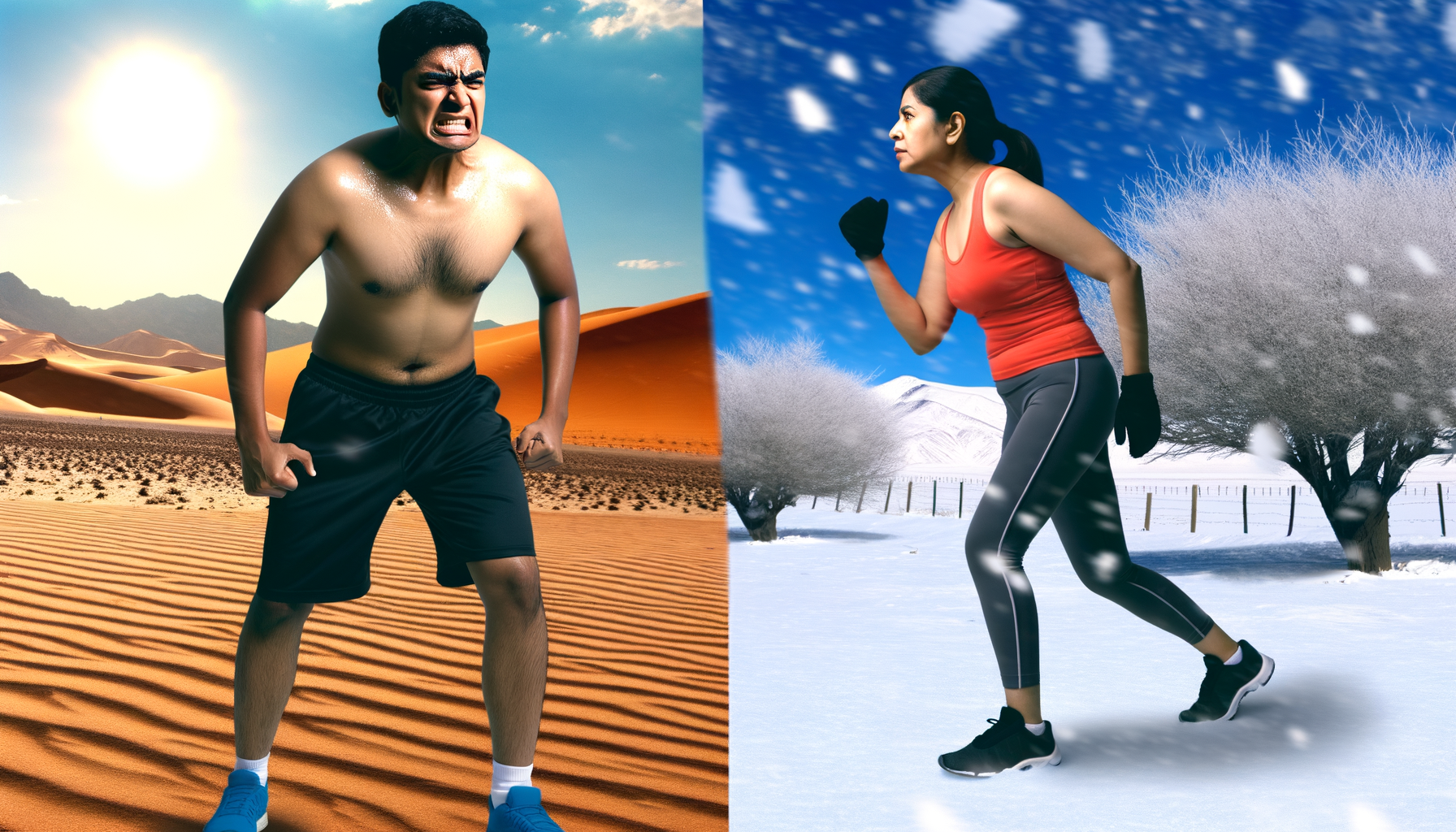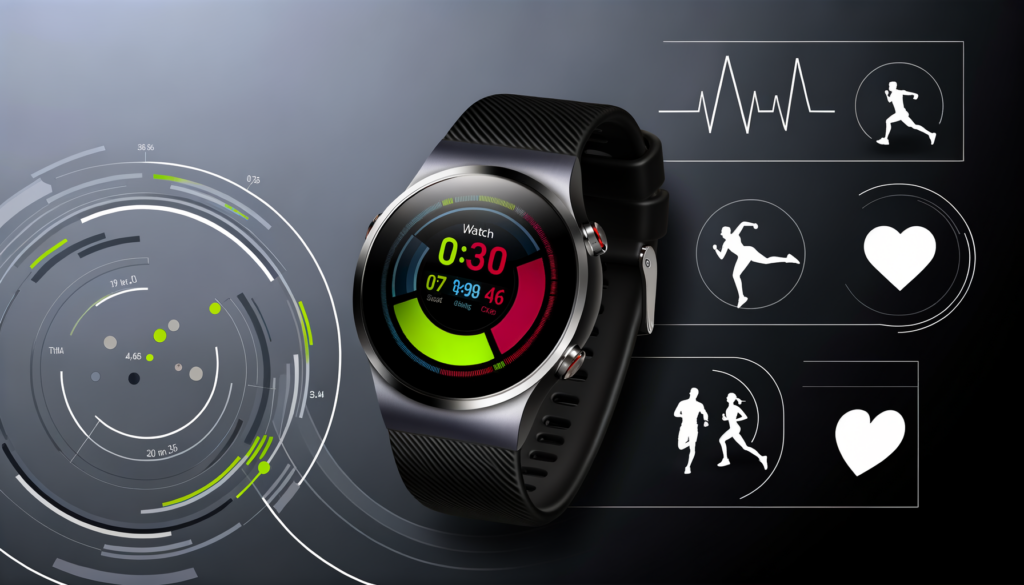Understanding Calorie Needs in Extreme Weather Conditions
When it comes to maintaining optimal health and performance, understanding how your body responds to different environmental conditions is crucial. Extreme weather, whether hot or cold, places unique demands on your body, and knowing how to fuel it appropriately can make a significant difference in your overall well-being and performance.
## Thermoregulation and Calorie Expenditure
### Hot Weather Considerations
In hot weather, the primary concern is not an increase in calorie burn due to the heat itself, but rather the body’s effort to maintain its internal temperature. According to Dr. Marc Eisenberg, a clinical cardiologist, the body does not require additional calories to produce sweat, which is the primary mechanism for cooling down in hot conditions.
However, the heat does have several physiological effects that can impact your energy expenditure. For instance, your heart works harder to pump blood to your skin to cool you off, which can increase your energy consumption. But this increase is not significant enough to translate into substantial calorie burn during exercise.
Moreover, exercising in hot weather can lead to dehydration if not managed properly. Dehydration can increase your heart rate and reduce your performance, but it does not significantly contribute to calorie burn. Proper hydration is essential to prevent dehydration and heat-related illnesses.
### Cold Weather Considerations
In contrast, cold weather does increase your calorie expenditure through mechanisms such as shivering and non-shivering thermogenesis. When your body temperature drops, it activates these processes to generate heat. Shivering, for example, involves rapid muscle contractions that burn calories to raise your body’s core temperature.
Studies have shown that being in cold conditions can increase your energy expenditure by approximately 48% due to these thermogenic processes. Non-shivering thermogenesis, which involves the activation of brown adipose tissue, also contributes to calorie burn, although to a lesser extent than shivering.
## Environmental Adaptation and Performance Fueling
### Acclimatization to Hot Conditions
When you are exposed to hot conditions regularly, your body acclimatizes over time. After about 14 days, you may feel a lower level of perceived exertion during exercise, but it is crucial to maintain proper hydration to avoid dehydration and heat-related illnesses.
### Acclimatization to Cold Conditions
In cold weather, acclimatization is also important. Spending extended periods in cold environments can lead to a more efficient thermogenic response. However, factors such as body composition, clothing, and nutrition play significant roles in how effectively your body generates heat.
For instance, individuals with more muscle mass tend to burn more calories in cold conditions because muscle tissue is metabolically active. Proper clothing can also influence the amount of heat your body produces, and a diet rich in carbohydrates and fats can provide the necessary fuel for thermogenesis.
## Nutrition Strategies for Extreme Weather
### Fueling for Hot Weather
In hot weather, it is essential to focus on hydration and electrolyte balance. Consuming foods and drinks that are high in water content and electrolytes can help maintain your body’s fluid balance. Additionally, carbohydrates serve as the primary energy source during exercise in hot conditions, so ensuring adequate carb intake is crucial.
### Fueling for Cold Weather
In cold weather, the focus should be on providing your body with the necessary fuel to generate heat. Complex carbohydrates and healthy fats are essential for thermogenesis. Proteins, especially those consumed in the evening, can also help maintain thermal comfort due to their thermogenic effects.
## Real-World Examples and Case Studies
### Military Expeditions in Arctic Conditions
Studies on military expeditions in arctic conditions have shown that the total energy expenditure can be significantly higher than in temperate climates. For example, soldiers on a Canadian Arctic expedition consumed approximately 3,500 kcal/day, which is comparable to their energy expenditure in warmer regions but with an additional thermogenic effect due to the cold.
### Athletes in Cold Weather Training
Athletes training in cold weather often experience improved performance due to the absence of heat and humidity. For instance, winter sports like skiing and ice skating can be more efficient in terms of calorie burn because the body does not have to expend energy to cool down. However, it is important to dress appropriately and stay hydrated to maximize the benefits.
## Summary and Practical Advice
Understanding how your body responds to extreme weather conditions is key to optimizing your performance and maintaining health. Here are some practical tips:
– **Stay Hydrated**: In both hot and cold weather, hydration is crucial. In hot weather, it helps prevent dehydration, while in cold weather, it supports your body’s metabolic processes.
– **Optimize Nutrition**: In hot weather, focus on carbohydrates and electrolytes. In cold weather, include complex carbohydrates, healthy fats, and proteins in your diet.
– **Acclimatize**: Allow your body time to acclimatize to extreme weather conditions. This can improve your performance and reduce the risk of heat-related or cold-related illnesses.
– **Dress Appropriately**: Wear clothing that helps your body maintain its core temperature. In hot weather, light, breathable clothing is best, while in cold weather, layered clothing can help trap heat.
By understanding these principles and adapting your nutrition and hydration strategies accordingly, you can better manage your calorie needs in extreme weather conditions and optimize your performance.
For more detailed guidance on calorie needs and nutrition planning, consider using tools like the Calorie Calculator Cloud to tailor your diet to your specific needs and environmental conditions. You can also explore the various Calorie Calculator Plans to find the best fit for your lifestyle and goals.
In conclusion, while the impact of extreme weather on calorie burn is significant, it is just one aspect of a broader strategy for maintaining health and performance. By combining the right nutrition, hydration, and acclimatization strategies, you can optimize your body’s response to any environmental condition.








